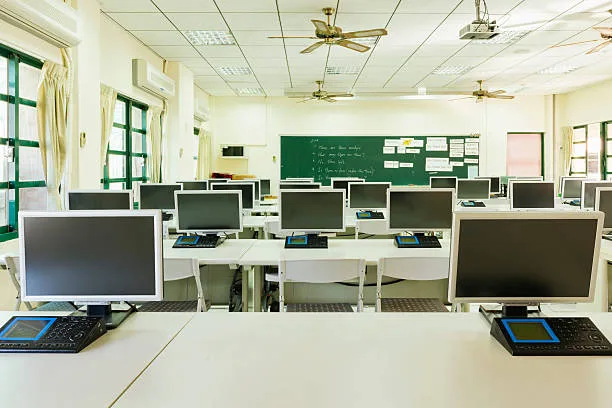Only 40% of Secondary Schools in Kenya Have Computer Labs – Report.
A report by the Kenya National Bureau of Statistics (KNBS) has revealed that only 40 per cent of secondary schools in Kenya have operational computer labs. This finding comes over a decade after the government launched the Digital Literacy Programme to integrate technology into the education system.
The study, titled Is Our Secondary School System Inequitable by Design?, was conducted in partnership with Usawa Agenda and highlights major inequalities in digital access. It points to a significant lack of essential teaching equipment, trained educators, and internet connectivity in many institutions.
The report further indicates that just 24.6 per cent of secondary school teachers have received training in digital literacy. Female teachers slightly surpass their male counterparts in this regard, with 26.9 per cent having undergone training compared to 23.5 per cent of male teachers.
Additionally, while 40 per cent of schools possess functioning computer labs, fewer than half (49.8 per cent) have internet access. Moreover, only 33.9 per cent of secondary schools offer computer lessons, demonstrating stark disparities across different types of schools.
The study highlights discrepancies in the availability of computer lessons. Among boys’ schools, 63.3 per cent provide computer education, whereas girls’ schools stand at 53.7 per cent. In contrast, only 24 per cent of mixed schools offer such lessons.
Further, 92.1 per cent of national schools, 50.1 per cent of private schools, and just 17.3 per cent of sub-county schools provide computer lessons, underscoring the uneven distribution of digital education.
Study Methodology and Key Findings
This research was based on face-to-face interviews and structured observations in 339 secondary schools, selected through a multistage, stratified random sampling process. The sample included 94 sub-county, 86 county, 86 extra-county, and 73 national schools.
Findings revealed that, on average, 52 students share a single computer in Kenyan secondary schools. Additionally, only 49.6 per cent of schools have a functional official telephone line, further limiting digital communication.
The report also assessed remote learning effectiveness, showing that 51.3 per cent of schools reached less than a quarter of their students through digital platforms. Meanwhile, 32.1 per cent engaged between 25 and 50 per cent of their students remotely. However, only 0.6 per cent of institutions successfully reached all learners.
During prolonged school closures, WhatsApp became the most widely used tool for remote education. The report found that SMS was the second most preferred platform at the national level, particularly for sub-county and county schools.
In contrast, national and extra-county schools favored online school portals as their secondary mode of communication.
Availability of Digital Devices
Schools also exhibited disparities in the availability of digital devices. Video decks were the most commonly owned, present in 84.5 per cent of institutions, whereas television sets were the least available, with ownership reported at only 35.5 per cent of schools.
The report’s release coincides with government efforts to enhance Kenya’s digital economy by improving technological skills, expanding internet access, and strengthening digital infrastructure.
In 2013, the administration of former President Uhuru Kenyatta launched an ambitious digital literacy initiative to provide free laptops to primary school learners.
However, the Sh24.6 billion project later shifted to distributing tablets to Class One pupils due to multiple challenges, including inadequate infrastructure, electricity shortages, budget constraints, and a lack of teacher training.
Read Also: Sh37bn Budget Cut in HELB and Scholarships to Affect Over 300,000 Varsity Students
A recent survey on youth and entrepreneurs trained under the DigiTruck digital literacy initiative revealed that nearly half of the participants reported an increase in their income after acquiring digital skills.
This underscores the growing significance of technological competencies in today’s job market. Despite the progress made, the report highlights that major challenges remain in ensuring equitable digital access for all secondary schools in Kenya.
Only 40% of Secondary Schools in Kenya Have Computer Labs – Report.
Follow Teachers Updates on Facebook, LinkedIn, X (Twitter), WhatsApp, Telegram, and Instagram. Get in touch with our editors at [email protected].


Discussion about this post